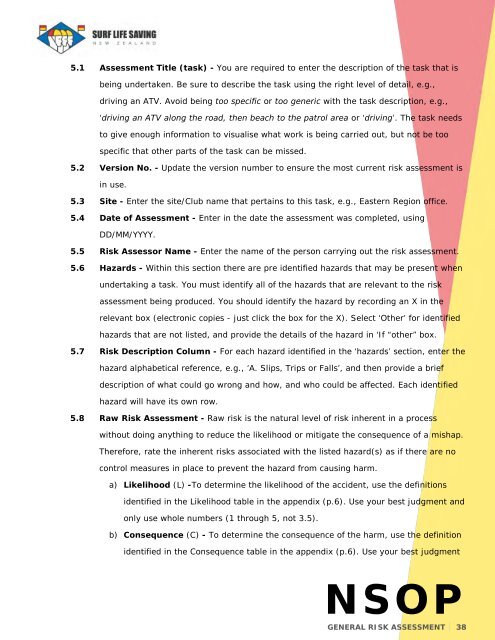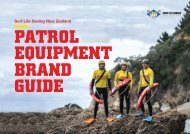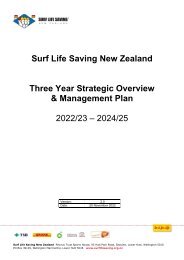National Standard Operating Procedures - Jul 2022
Full NSOP Manual
Full NSOP Manual
Create successful ePaper yourself
Turn your PDF publications into a flip-book with our unique Google optimized e-Paper software.
5.1 Assessment Title (task) - You are required to enter the description of the task that is<br />
being undertaken. Be sure to describe the task using the right level of detail, e.g.,<br />
driving an ATV. Avoid being too specific or too generic with the task description, e.g.,<br />
‘driving an ATV along the road, then beach to the patrol area or ‘driving’. The task needs<br />
to give enough information to visualise what work is being carried out, but not be too<br />
specific that other parts of the task can be missed.<br />
5.2 Version No. - Update the version number to ensure the most current risk assessment is<br />
in use.<br />
5.3 Site - Enter the site/Club name that pertains to this task, e.g., Eastern Region office.<br />
5.4 Date of Assessment - Enter in the date the assessment was completed, using<br />
DD/MM/YYYY.<br />
5.5 Risk Assessor Name - Enter the name of the person carrying out the risk assessment.<br />
5.6 Hazards - Within this section there are pre identified hazards that may be present when<br />
undertaking a task. You must identify all of the hazards that are relevant to the risk<br />
assessment being produced. You should identify the hazard by recording an X in the<br />
relevant box (electronic copies - just click the box for the X). Select ‘Other’ for identified<br />
hazards that are not listed, and provide the details of the hazard in ‘If “other” box.<br />
5.7 Risk Description Column - For each hazard identified in the ‘hazards’ section, enter the<br />
hazard alphabetical reference, e.g., ‘A. Slips, Trips or Falls’, and then provide a brief<br />
description of what could go wrong and how, and who could be affected. Each identified<br />
hazard will have its own row.<br />
5.8 Raw Risk Assessment - Raw risk is the natural level of risk inherent in a process<br />
without doing anything to reduce the likelihood or mitigate the consequence of a mishap.<br />
Therefore, rate the inherent risks associated with the listed hazard(s) as if there are no<br />
control measures in place to prevent the hazard from causing harm.<br />
a) Likelihood (L) -To determine the likelihood of the accident, use the definitions<br />
identified in the Likelihood table in the appendix (p.6). Use your best judgment and<br />
only use whole numbers (1 through 5, not 3.5).<br />
b) Consequence (C) - To determine the consequence of the harm, use the definition<br />
identified in the Consequence table in the appendix (p.6). Use your best judgment<br />
NSOP<br />
GENERAL RISK ASSESSMENT 38
















